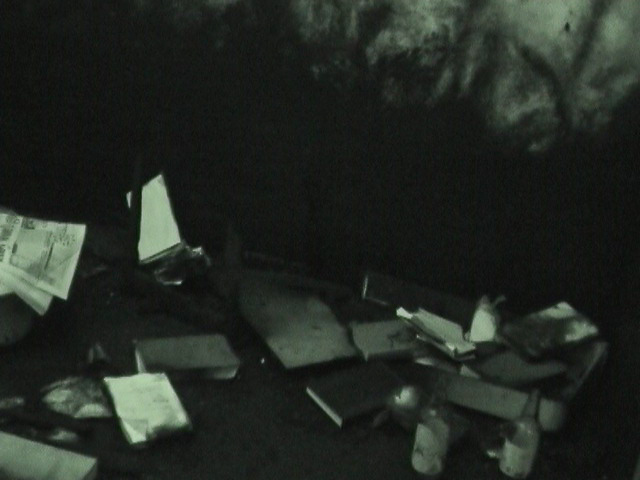Frank

Frank was a large-scale installation of 10 interconnecting rooms on the main stage at Newcastle Playhouse. The audience travelled through one at a time every 5 minutes, encountering performers and other audience members on the way. Nowadays it might be called “immersive theatre” – but the term wasn’t coined back then…
How we made it
We’ve always been interested in what it means to hand over power and responsibility to an audience for their experience of the event – physically, emotionally and intellectually. It was inspired by our work for Northern Stage in Newcastle where Richard Gregory and Simon Banham made the large-scale visual piece The Nest of Spices (1995), in a disused power station next to Swan Hunter’s shipyard – as well as Renny O’Shea’s work over several years with Enrique Vargas.
Frank was an invitation to the audience to act, to challenge themselves to take action. We wanted to make a narrative shaped by space and journey as much as time. Frank helped us explore relational performance and to attempt to make theatre with no performers. We’ve worked in several contexts with the idea of ‘invisible’ performers - here we tried to go beyond invisibility to absence. The basic task for performers was to ensure that the installation could function without them, and then absent themselves from it: a big challenge for actors more used to inhabiting characters and telling stories.
How it is presented
“The audience waited in a line of chairs in the wings for a light to turn green and signal their entry. Frank Sinatra was always playing inside. They’d find themselves on a dingy, ill-lit corridor – a smell design included cigarette ash, beer and body fluids. Locked doors with a peephole allowed you to glimpse or linger over what was inside. Eventually a door opens into a washroom. You can smell food, somewhere.
You spend as long as you want in each room. Some people passed through the whole installation in 15 minutes, some stayed for over 2 hours. There was: a room full of lavender bushes; a party room for a forlorn game of musical chairs; a room with an unmade bed and a red telephone; a room with a record player and a big pile of Frank Sinatra records; a burned room with a tv showing highlights from the 1970 World Cup Final and a crate of beer; the final room had a circular formica table, 6 chairs and a big pan of soup…
Frank was flawed, important and exciting for Quarantine. We explored ideas which have filtered into every subsequent project – the importance of intimate encounters, acknowledgement of the audience’s agency, food as a site for social encounter. Fuelled by beer from the burned out room, the first versions of Frank turned into a raucous party – and that was probably all it was. We found that blocking off a door and dictating direction of travel could affect both mood and the potential for meaning. We made a dramaturgical decision by changing the physical environment – by making, somewhat ironically, a linear dramaturgy….
Some of the rooms worked well. A group of strangers would arrive in the soup room from a journey with a common set of stimuli, sit, share food and talk. What we learned from those who met and shared soup influenced the creation of EatEat, Rantsoen, Butterfly, Susan & Darren, No Such Thing – and an ongoing interest in food and hospitality within performance.”
Richard Gregory, Director
Director: Richard Gregory
Designer: Simon Banham
Journey dramaturgy & smell design: Renny O’Shea
Soundscape: John Alder
Video: Alex Elliott
Our funders
Dates
PAST DATES
2002 | Newcastle Playhouse
Related Content
This journey is what you make of it.
**** Elizabeth Scott, Metro North East 5 June 2002
It is a step into the unknown followed by a journey to be made alone. Scareee! I sent the wife.
David Whetstone, The Journal 1 June 2002
As Shakespeare said, “All the world’s a stage”. After experiencing Frank, you’ll believe it.
Angela Dodson, Sheilds Gazette 4 June 2002
A journey into the unknown through a series of rooms. No stage, apparently no script.
Viv Hardwick, Northern Echo 1 June 2002